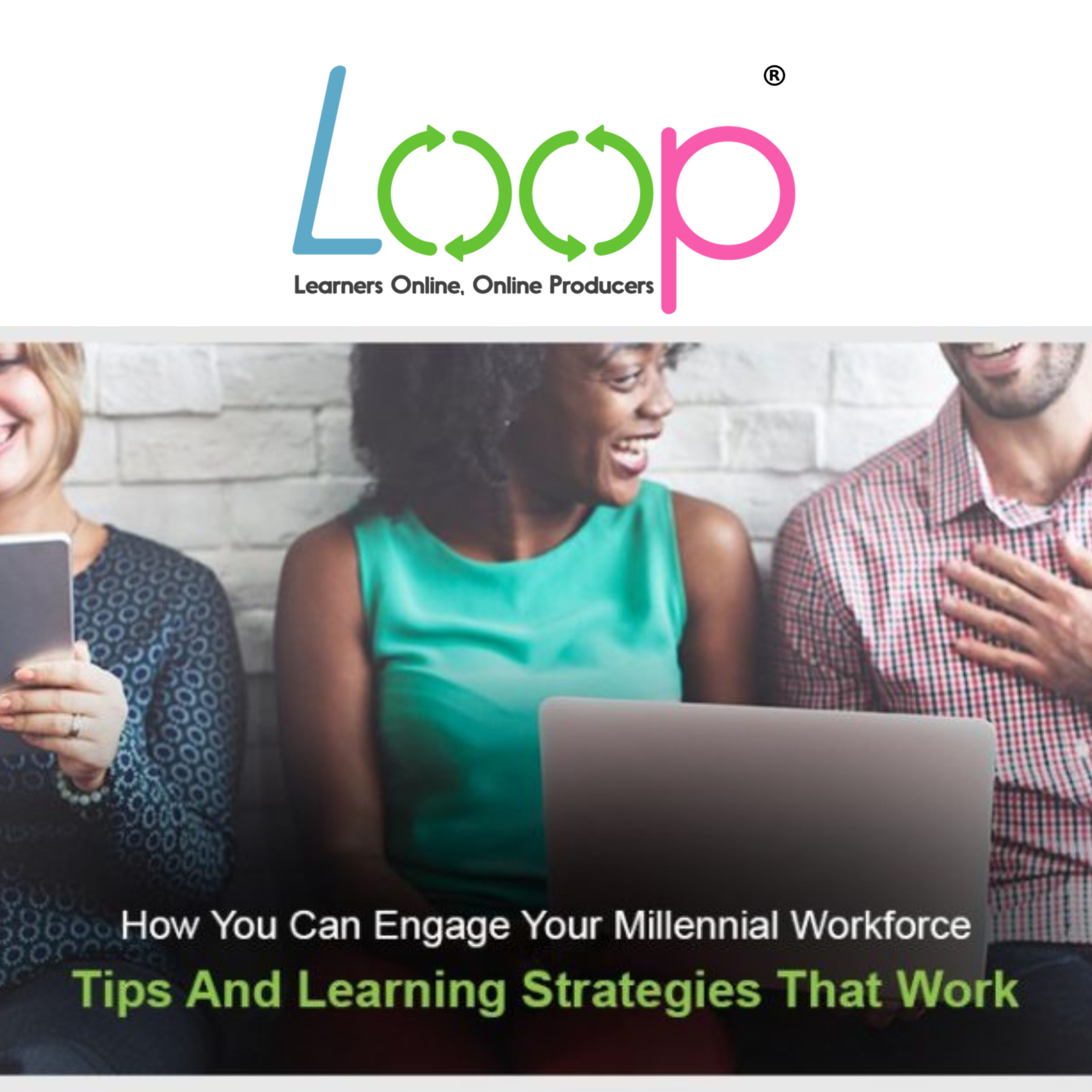BLOG

8 Learning Strategies And Tips To Engage Your Millennial Workforce
Published on March 14, 2017
According to most researchers and demographers, Millennials belong to the generation of people born between 1980s and early 2000s. They are also sometimes referred to as Gen Y. They’re becoming a force to reckon with as their presence in organizational workforces and several leading global economies is increasing.
This generation has grown up differently, and deserves to be treated differently. Learning strategies that otherwise work for older generations aren’t likely to find resonance with folks of this ilk.
It therefore becomes important to understand their traits, their learning preferences, their behavior, and how they go about their everyday lives to be able to create learning strategies that grab (and retain) their attention and help them apply that learning on the job.
What Are Their Characteristics Or Traits That Would Have A Direct Impact On The Learning Strategy?
Some of the key characteristics of the millennial generation:
- First generation “digital natives”.
While Baby Boomers or people from the Gen X group would have played with He-Man action figures or Barbie dolls as children, most Millennials would have had gaming consoles, computers, and mobile phones as toys back in their childhood. They have grown with technology, the internet, social media, and smartphones. - Tech savvy.
Technology and digital devices have been part and parcel of their lives right from the beginning and they take to technology like fish to water. - Strong multi-tasking capability.
While employees of older generations would prefer focusing on one task at a time, Millennials are comfortable working on a document, listening to music, and responding to their peers on chat at the same time! - Are ambitious.
Studies have found most Millennials to be nurturing high ambitions and expect a quick raise in their ranks in organizations. - Have short attention spans.
This is a widely accepted fact. So much so that according to a report, NBA is seriously considering shortening the length of their games to cater to Millennials’ short attention spans! - Easily distracted.
Millennials are easily distracted. If you’ve seen them getting hooked to their phones during a class or a meeting, you’d know what I’m talking about. - Need a clear and definitive goal and outcome.
This generation doesn’t like beating around the bush. They want their goals and outcomes to be specific. - Need recognition.
Millennials are in constant need of recognition. According to a report, a significant percentage of Millennials expect a promotion, raise, or a bonus every 1-2 years. In fact, it says Millennials treat bonuses as a right rather than a reward! - Need constant feedback.
Millennials have grown up with the internet which provides instant feedback. They need constant feedback and instant gratification of their search for knowledge and day-to-day requirements. - Need flexibility.
- The last thing Millennials want is stringency. They like flexibility – in the devices they use, the way they learn, and pretty much everything they do.
Furthermore, their learning styles show the following notable aspects:
- They like learning to grow at work.
- Group-based activities work really well with them.
- They look for relevant information and don’t like wasting time on detailed supporting information.
- They appreciate hands-on learning experiences.
- They are not fond of authoritative styles of teaching and taking orders. They like their say to be valued and an environment which encourages them to voice it.
- They show a strong preference for visual aids (rich media).
- They prefer experiences they can relate to easily and apply (real life scenarios).
- They are at ease with technology and respond best to interactive and engaging multimedia formats.
- They like exploring things (as opposed to being “asked” to do something or following a rigid learning path).
- They want more freedom, less pressure, and platforms to express their creativity.
- They crave for attention and personal care.
- Bottomline: They are open to learning as long as it’s short and fun.
What Tips And Strategies Can Be Used To Engage Your Millennial Workforce?
Here are some of the strategies you can use to help Millennials learn and apply that learning on the job:
1. Offer Responsive mLearning Or Mobile Learning.
According to a survey, about 40% of Millennials interact more with their smartphones than they do with people. Besides, about 77% of Millennials spend more than two hours every day on their smartphones. Responsive mobile learning solutions and the flexibility to learn on the device of their choice will resonate well with Millennials.
2. Use Microlearning.
Bite-sized learning is an ideal way to engage Millennials and offset the short attention spans challenge associated with them. Also, the fact that they like hands-on learning experiences makes a great case for using microlearning nuggets as Performance Support Tools (PSTs).
3. Extend To Social Learning.
According to a survey, 83% of Millennials said they have a Facebook account. This generation loves social media. Their liking for collaborative experiences can be leveraged using forums and communities of practice that facilitate social learning, collaborative learning, knowledge sharing, and curation of learner created content.
4. Engage With Gamification Of Learning.
The concept of gamification resonates really well with Millennials. You can use gamification elements in learning to challenge and motivate these learners and bring about the required engagement.
5. Use Videos Extensively And Offer Learning Nuggets In Rich Media Formats.
Videos are a big hit with Millennials. According to a report, 81% of Millennials in the U.S. watch videos on YouTube. This also justifies the fact that they like searching and choosing what they want to watch contrary to watching shows on TV. You can use this trait to your advantage and offer video-based learning nuggets to engage them.
6. Offer A Learning Path Based Approach.
You can offer learning as a series in the form of a learning path and help Millennials learn, practice, and take remediation along the journey.
7. Wearable Tech.
It allows Millennials to be able to interact with the device at all times and can be leveraged to push learning nuggets or performance support learning aids. Wearable tech also serves the immediacy purpose better, and, due to the aesthetic appeal, goes well with the fashion element to excite Millennials as well.
8. Curated Personalized Learning.
As mentioned earlier, Millennials like exploring information. Curation of content gives them the opportunity to learn and contribute at the same time. Besides, personalization of learning to suit their individual learning style will go a long way in helping the learning stick.
If you are keen to find out more about getting Instructional Design right, you can check out Ei Design’s A Guide on Instructional Design Theories and Design Application course on Loop.sg today!
Content by Asha Panday (apandey@eidesign.net), shared from https://elearningindustry.com/how-engage-your-millennial-workforce-tips-learning-strategies-work


